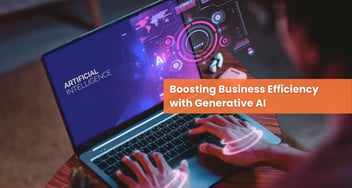The Future of Artificial General Intelligence
Explore the dynamic landscape of Artificial General Intelligence (AGI) and OpenAI's Q-Star model.

In the ever-evolving landscape of artificial intelligence, OpenAI has emerged as a key player, consistently pushing the boundaries of what's possible.
Recent developments within the organization have not only been marked by technological advancements but also a significant leadership transition. OpenAI is steering the ship toward a new horizon, with the unveiling of its latest creation – the Q-Star AI model.
OpenAI's Latest Developments
The transition in leadership at OpenAI has been nothing short of a spectacle, capturing the attention of tech enthusiasts and industry experts alike. As the organization undergoes a changing of the guard, it also spearheads the development of Q-Star, a powerful AI model that has already demonstrated its prowess in solving mathematical problems.
While its current capabilities are focused on the level of grade-school students, Q-Star's potential has ignited a robust debate on the risks and benefits associated with advanced AI models.
Leveraging the expertise of AI development services, OpenAI aims to refine and expand the capabilities of Q-Star, paving the way for groundbreaking applications.
Related Read: A Guide to OpenAI-Powered Apps and Data Privacy
The Road to Artificial General Intelligence
Artificial General Intelligence (AGI) represents the holy grail of AI – the ability to learn and reason akin to human intelligence. Though AGI is still in its nascent stages, the potential it holds is nothing short of revolutionary.
Industries such as healthcare, finance, transportation, and manufacturing stand to be transformed by the advent of AGI. The timeline for AGI's full realization remains uncertain, with predictions ranging from a decade to as far as 2060. The race to achieve Artificial General Intelligence is on, with researchers and organizations striving to unlock the secrets of human-like cognition.
Impact on the Large Language Model Industry
In the realm of AI, Large Language Models (LLMs) have taken center stage, exemplified by the likes of GPT-3 and the cutting-edge GPT-4. These models showcase remarkable learning and reasoning abilities, leveraging external tools, plugins, or APIs to tackle complex problems.
Related Read: Top 12 Large Language Models
Yet, the implications of these large-scale language models extend beyond their immediate applications. The debate intensifies as discussions around their role in the creation of Artificial General Intelligence unfold, accompanied by concerns about employment disruption, bias, and the potential spread of misinformation.
A Time for Both Excitement and Caution
The advancements in Artificial General Intelligence and LLMs evoke a dual response – excitement for the unprecedented possibilities and caution for the inherent risks. The transformative potential of these technologies spans across various sectors, promising societal benefits that could redefine the way we live and work.
However, the ethical considerations and potential pitfalls cannot be ignored. Responsible development and use of these technologies are paramount, with a strong emphasis on safety, fairness, and transparency.
Empower Your Innovation Journey with AI
Our AI development services offer a tailored approach to meet your specific business needs.
In conclusion, the world of AI and AGI resembles a captivating tech soap opera, filled with daily twists and turns that keep us on the edge of our seats. As we witness the drama unfold, the anticipation grows for the next episode in this technological saga.
The future promises to reveal how these advancements will continue to shape our world, presenting both opportunities and challenges that demand our careful consideration and ethical stewardship.


%201-1.webp?width=148&height=74&name=our%20work%20(2)%201-1.webp)


.png?width=344&height=101&name=Mask%20group%20(5).png)
















